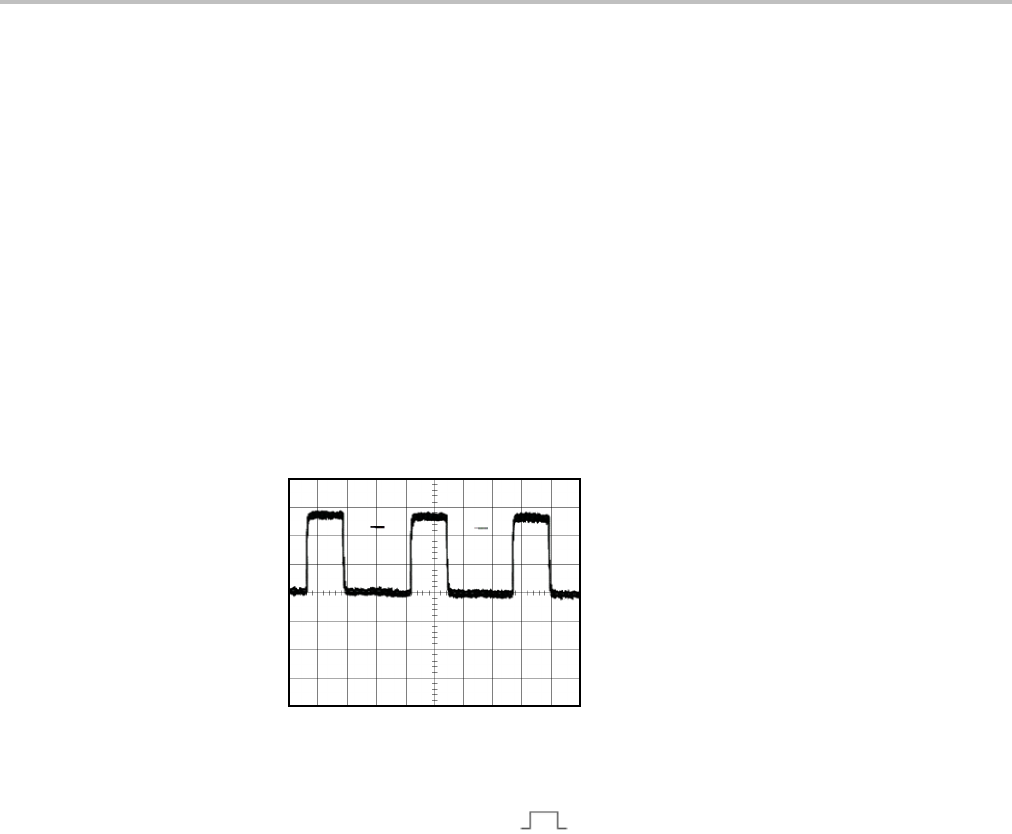User manual
Table Of Contents
- toc
- General safety summary
- Compliance Information
- Preface
- Getting Started
- Operating Basics
- Understanding Oscilloscope Functions
- Application Examples
- Taking Simple Measurements
- Using Autorange to Examine a Series of Test Points
- Taking Cursor Measurements
- Analyzing Signal Detail
- Capturing a Single-Shot Signal
- Measuring Propagation Delay
- Triggering on a Specific Pulse Width
- Triggering on a Video Signal
- Analyzing a Differential Communication Signal
- Viewing Impedance Changes in a Network
- Data Logging
- Limit Testing
- Math FFT
- USB Flash Drive and Device Ports
- USB Flash Drive Port
- File Management Conventions
- Saving and Recalling Files With a USB Flash Drive
- Using the Save Function of the Print Front Panel Button
- USB Device Port
- Installing the PC Communications Software on a PC
- Connecting to a PC
- Connecting to a GPIB System
- Command Entry
- Connecting to a Printer
- Printing a Screen Image
- Reference
- Appendix A: Specifications
- Appendix B: TPP0101 and TPP0201 Series 10X Passive Probes Inform
- Appendix C: Accessories
- Appendix D: Cleaning
- Appendix E: Default Setup
- Appendix F: Font Licenses

Application Examples
8. Push the Cursor
2 option button.
9. Turn the multipurpose knob to place the second cursor on the data output
transition.
The Δt readout in the Cursor Menu is the p ropagation delay between the
waveforms.
The readout is valid because the two waveforms have the same
horizontal scale (seconds/division) setting.
Triggering on a Specific Pulse Width
You are testing the pulse widths of a signal in a circuit. It is critical that the pulses
all be a specific width, and you need to verify that they are. Edge triggering shows
that your signal is as specified, and the pulse width measurement does not vary
from the specifi cation. However, you think there might be a problem.
To set up a test for pulse width aberrations, follow these steps:
1. Push
the AutoSet button to trigger a stable display.
2. Push the single cycle
option button in the AutoSet Menu to view a
single cycle of the signal, and to quickly take a Pulse Width measurement.
3. Push the Trig Menu button to see the Trigger Menu.
4. Push Type ► Pulse.
5. Push Source ► CH1.
6. Tu rn the trigger Level knob to set the trigger level near the bottom of the
signal.
7. Push When ► = (equals).
8. Turn the m ultipurpose knob to set the pulse width to the value reported by the
Pulse Width measurement in step 2.
9. Push More ► Mode ► Normal.
You can achieve a stable display with the oscilloscope triggering on normal pulses.
44 TBS1000 Series Oscilloscopes User Manual










